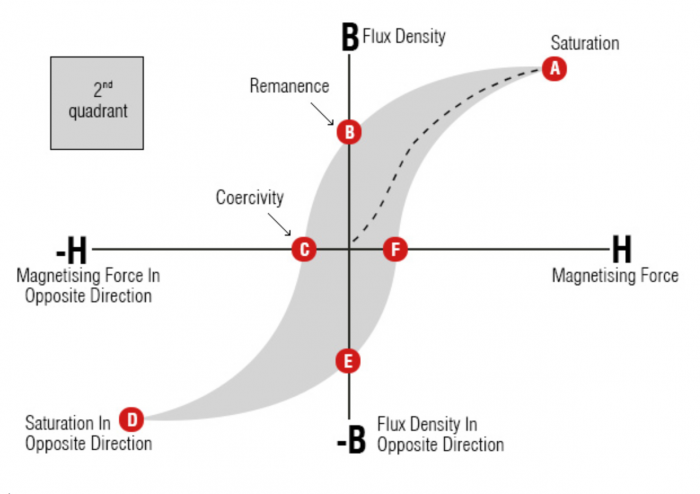When trying to determine or measure the strength of a magnet the answer will be dependent on what is meant by strength be it either the pulling force or magnetic field strength, which are both often referred to as strength.
So below we will describe each attribute that contributes to the performance of a magnet and in turn answer the question, how is the strength of a magnet measured?
Pull Strength
This is how much force is needed to pull the magnet off a steel surface and is usually referenced in kilograms.
Gauss Reading (Flux Density)
If a Gauss meter or flux meter hall probe is placed on the pole of a magnet, a reading can be taken showing the number of lines of magnetism in every cm², 1 Gauss = 1 line of magnetism in 1cm², this is also known as flux density.
This reading is an ‘open circuit’ value which will be substantially lower than the ‘Br’ value and will be directly related to the material and the length-to-diameter ratio of the magnet.
Long magnets with small diameters will have a much higher open circuit flux density than short magnets with relatively large diameters, even when they are manufactured from the same grade of magnetic material.
If you had a rod magnet measuring 5,000 Gauss on the poles and you cut it in half, you would not expect the two smaller-length magnets to have the same Gauss reading in an open circuit.
Hysteresis Graph Testing
This is a thorough test where the magnet is magnetised and demagnetised within a closed-circuit situation and a value for Br, Hc, and (BH)max are obtained. These relate to the maximum amount of magnetism in the closed-circuit magnet, the resistance to being demagnetised, and the total energy within the magnet.
Each factor can only be measured with a hysteresis graph testing machine which plots a second quadrant hysteresis curve.

Contact Magnet Expert Today
At Magnet Expert, we welcome any inquiry about magnets, their applications, and your custom magnet needs. If you have questions regarding our magnetic assemblies or systems, technical information, and advice, or you simply want to place an order please call 0845 519 4701.
If you prefer to send us an e-mail directly, please feel free by emailing us at sales@magnetexpert.com.
Our business hours: Monday to Friday 8.00 am to 5.30 pm.


